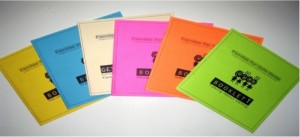New research: Assessing the Effects of Families for Safe Dates

To prevent teen dating violence, we need to think about prevention efforts that go beyond classroom based strategies. It can be hard to get into classrooms (especially to provide multiple sessions that we know are more likely to prevent violence than single sessions.)
How can we work with parents and families to prevent teen dating violence? In my experience as a prevention practitioner and as a parent, I know parents are less involved than they were when their children were younger. Just if we could find a way to help parents and families to make a difference…
In the October 2012 issue of the Journal of Adolescent Health, Vangie Foshee and her colleagues have an article Assessing the Effects of Families for Safe Dates, a Family-Based Teen Dating Abuse Prevention Program that evaluates a family based prevention effort.
You can learn more about this study when she joins the PreventConnect web conference Involving families in teen dating abuse prevention on September 28, 2012.
Here is the full citation and abstract:
Vangie A. Foshee, Heath Luz McNaughton Reyes, Susan T. Ennett, Jessica D. Cance, Karl E. Bauman, J. Michael Bowling (2012) Assessing the Effects of Families for Safe Dates, a Family-Based Teen Dating Abuse Prevention Program. Journal of Adolescent Health, Volume 51, Issue 4 , Pages 349-356, October 2012
Click here to see the article on the journal’s web site.
Abstract
Purpose: To examine the effects of a family-based teen dating abuse prevention program, Families for Safe Dates, primarily on outcomes related to testing the conceptual underpinnings of the program including (1) factors motivating and facilitating caregiver engagement in teen dating abuse prevention activities, and 2) risk factors for teen dating abuse, and secondarily on dating abuse behaviors.
Methods: Families were recruited nationwide using listed telephone numbers. Caregivers and teens completed baseline and 3-month follow-up telephone interviews (n = 324). Families randomly allocated to treatment condition received the Families for Safe Dates program including six mailed activity booklets followed-up by health educator telephone calls.
Results: There were significant (<.05) treatment effects in hypothesized directions on most of the factors motivating and facilitating caregiver engagement in teen dating abuse prevention activities including caregiver perceived severity of dating abuse, response efficacy for preventing dating abuse, self-efficacy for talking about dating abuse, knowledge of dating abuse, acceptance of dating abuse, communication skills with the teen, and belief in the importance of involvement in their male (but not female) teen’s dating. The latter effect was the only one moderated by sex of the teen. The targeted risk factor affected by the program was teen acceptance of dating abuse. Treatment was also significantly associated with less physical dating abuse victimization.
Conclusions: Modifications to the program are warranted, but overall, the findings are very favorable for the first family-based teen dating abuse prevention program to be evaluated.

Leave a Reply